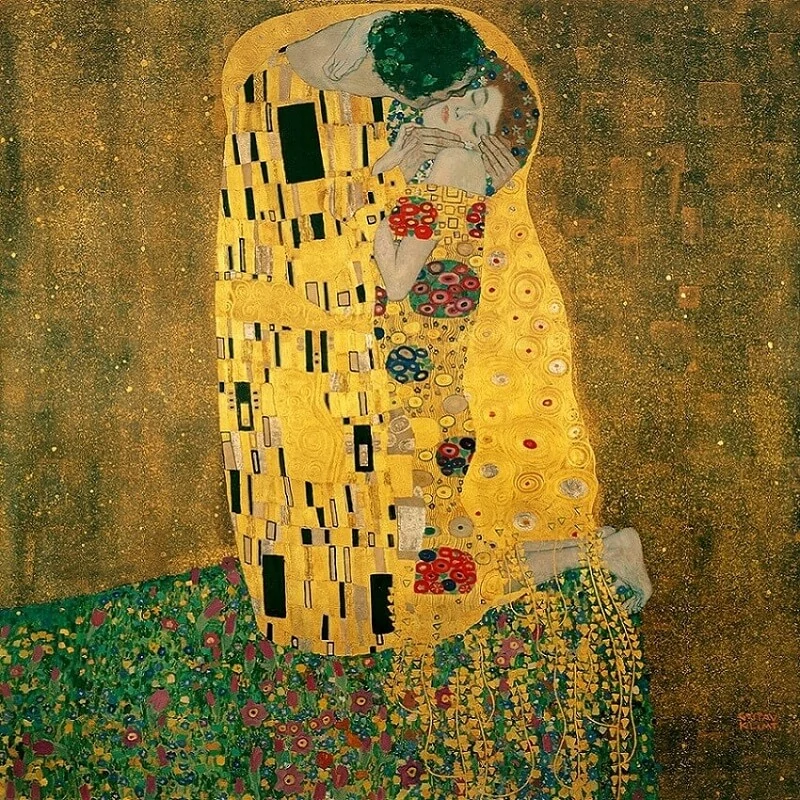Gold, a precious metal admired for its lustrous beauty and enduring value, has played a significant role in art throughout history. From ancient civilizations to the Renaissance and beyond, artists have utilized gold to create breathtaking masterpieces that captivate and inspire. In this article, we will delve into the rich history of gold in art, exploring its symbolism, aesthetic allure, and the profound impact it has had on artistic creations.
The Symbolism and Significance of Gold in Art
Gold has held symbolic meaning across cultures and time periods, representing wealth, power, divinity, and enlightenment. In ancient Egypt, gold was associated with the sun god Ra and was believed to embody eternal life. The Byzantines used gold in religious icons and mosaics to convey the heavenly nature of the divine. In Christian art, gold often adorned religious objects and illuminated manuscripts, symbolizing the divine presence and transcendence.
In addition to its religious and spiritual connotations, gold has also been associated with earthly power and wealth. During the Renaissance, gold leaf was used extensively in commissioned portraits of royalty and nobility. These artworks not only reflected the opulence and status of the subjects but also served as a visual display of their authority and prosperity.
Golden Masterpieces: Examples from Art History
Art history is replete with golden masterpieces that demonstrate the exceptional use of gold in various artistic forms. One notable example is Gustav Klimt’s “The Kiss,” where gold leaf is meticulously applied to evoke a sense of divine love and transcendence. The golden background creates an ethereal aura that elevates the intensity of the passionate embrace.

Another remarkable example is the “Golden Buddha” sculptures found in various Buddhist traditions. These sculptures are often covered in gold leaf or made entirely of gold, embodying the enlightened nature of the Buddha and serving as objects of veneration and spiritual devotion.
Aesthetic and Visual Impact of Gold
Gold’s aesthetic appeal in art is undeniable, bringing radiance, warmth, and a sense of luxury to any artwork. The reflective properties of gold create a luminous effect, enhancing the visual impact of a piece. Whether used sparingly or lavishly, gold commands attention, drawing viewers into its gleaming allure.
In Byzantine mosaics, gold tesserae were skillfully incorporated, capturing and reflecting light to create a heavenly and ethereal atmosphere. However, the use of gold in medieval illuminated manuscripts added a touch of opulence and enhanced the sacred nature of the texts.
Moreover, gold has been employed in decorative arts such as gilding on furniture, frames, and architectural elements. The shimmering gold accents elevate the overall aesthetic and lend a sense of grandeur and sophistication to the surroundings.
Benefits of Using Gold in Artistic Creations
The use of gold in artistic creations offers several benefits beyond its visual impact. Gold is a durable material that resists corrosion, ensuring that artworks withstand the test of time. It retains its luster and brilliance, maintaining the original intent of the artist for generations to come.
Furthermore, the application of gold leaf or the use of gold paint allows for intricate detailing and embellishments. Artists can create intricate patterns, delicate accents, and textured surfaces, adding depth and richness to their works.
Additionally, gold has the ability to evoke emotions and create a sense of awe and reverence in viewers. Its association with wealth and power can elicit feelings of admiration and aspiration. The presence of gold in an artwork can enhance its perceived value and elevate the viewer’s experience.
Conclusion
Gold has left an indelible mark on the history of art, both for its symbolism and aesthetic appeal. From ancient civilizations to contemporary art, artists have harnessed the captivating allure of gold to create masterpieces that evoke awe, reverence, and beauty. Through its use, gold has elevated the artistic expression and enriched the visual language of countless creations. Moreover, as we continue to appreciate and explore the impact of gold in art, we recognize its enduring significance and timeless appeal.
Learn more about Art at Luxpeer Art Blog.
